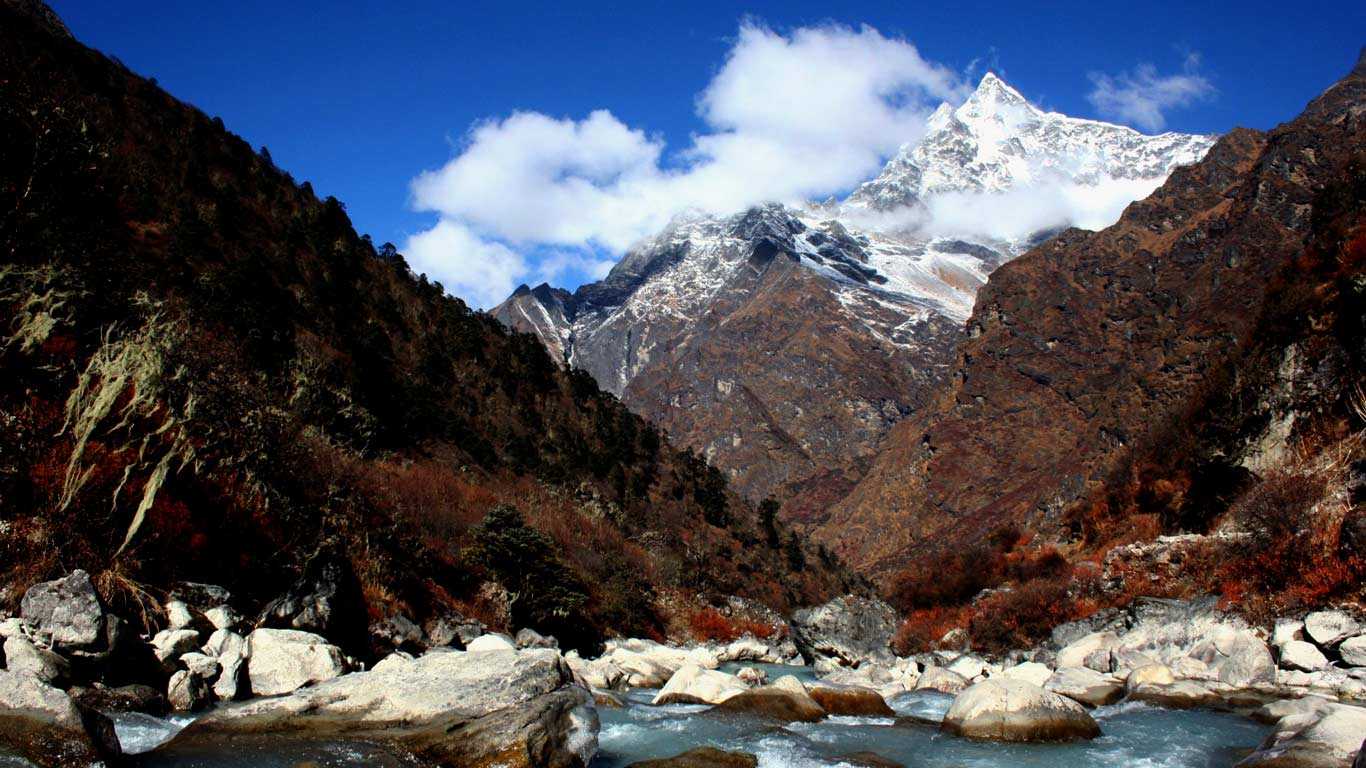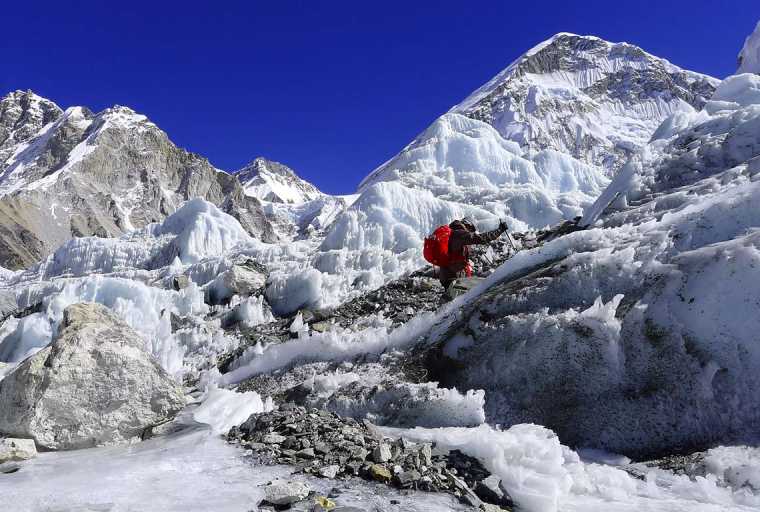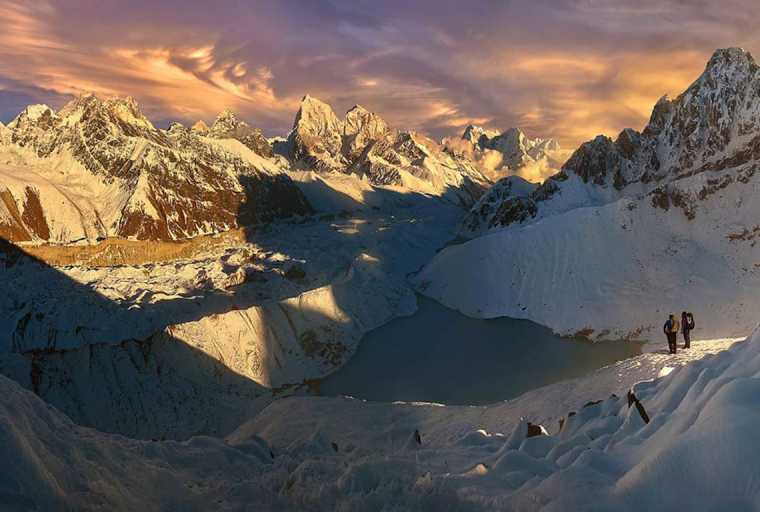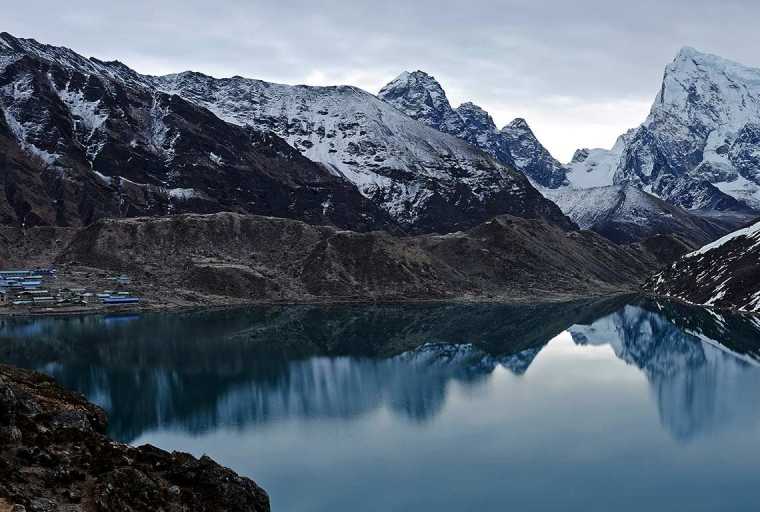Things to Know About Rolwaling Tsho Rolpa Trek

If you wish to view the stunning beauty of the Helambu region, Rolwaling Tsho Rolpa is one of the best trekking locations. This Rolwaling trek is one of the most unique and eccentric routes. It is believed that the less visited spots are the most captivating and alluring. Rolwaling Tsho Rolpa is one of Nepal's hidden and unique destinations. Traveling through this region allows you to appreciate the region's sheer beauty. Despite its natural beauty, landscapes, people, flora, mountains, culture, and other attractions, the Rolwaling Valley does not receive enough tourists. There has never been a moment when Rolwaling's spectacular beauty has not made a lasting impression on trekkers' thoughts. It has always piqued the interest of explorers, who are drawn to visit as soon as they hear about it.
This magnificent Valley of Rolwaling, hidden around the arms of Langtang National Park and Khumbu (Mt. Everest), stays timid and undisturbed by city’s outer modernism. Visiting the valley, you will have a blast combining adventure and excitement with the people's usual way of life. The Rolwaling valley is a deep Himalayan valley considered a spiritual shrine by local Buddhists. It is shrouded behind the enormous snow-capped mountain of Gaurishankar (7134m). Rolwaling means "plow valley," and its sheer rocks resemble a plow furrow. It's a less visited area with fewer facilities, but the landscapes and magnificent vistas are among the finest in Nepal.
The Rolwaling Trekking Route takes you past stunning glaciers, steep slopes, and snow-capped lakes. You will get the chance to interact with the Tamang and Sherpa populations that inhabit the area. The trails lead to the ancient monastery of Na Gaon, where Buddhist master Padma Sambhava is said to have spent a long period meditating. The route also leads to Lake Tsho Rolpa, one of Nepal's largest glacial lakes, whose tranquility cannot be expressed in phrases. The lake is one of the Seven Secret Valleys that is believed be the Yeti's home! While seeing a yeti on a trek is extremely rare, there are intriguing terraced farms, turbulent rivers, woodlands, and two spectacular glaciers to see, as well as the stunning glacial lake Tso Rolpa that you can admire and imprint in your eternal memories.
A SHORT DESCRIPTION OF ROLWALING AND TSHO ROLPA TREK
The Trek to Rolwaling Tsho Rolpa, positioned in east-central Nepal, is the most amazing trek in the remote Himalayan terrain. The Tsho Rolpa Lake Trek begins in Chetchet Bazar, which is about an eight-hour drive from Kathmandu. The route that follows the Tamakoshi River's course on its way to Simi Gaon adds an interesting aspect to your journey.
The adventure begins with an easy stroll along the big highlands to Simi Gaon, passing through multi-ethnic communities that provide insight into the lifestyle and traditions of various indigenous tribes. The glacier lake TshoRolpo offers a once-in-a-lifetime experience along this path. The lake's pristine meadow, with mountains and rough terrain in the background, will warmly welcome you.
As you trek through the little settlements of the Rolwaling Valley, you will enjoy a magnificent glimpse of Gaurishankar Himal, Dorje Lakpa, Rolwaling Himal, and Mt. Tashi Lapcha. The trekking routes mainly pass through waterfalls, rivers, Mani walls, gumbas, rice fields, and meadows, all of which render the trek an unforgettable experience. With mountains all around, there is a lake in the middle, surrounded by silence.
You can relax and appreciate the serene beauty of the lake by immersing yourself in the tranquil surrounding. Surrounded by the towering Rolwaling ranges, Tsho Rolpa looks like a fine art painting; anybody who witnesses it thinks it's heaven on earth. Reaching Lake Tsho Rolpa feels like stepping through the gates of Eden.
WHY ROLWALING TSHO ROLPA?
Panoramic vista of glittering snow-covered peaks, including Gauri Shankar (7145m), Melungtse (7181m), and others.
Various mani walls, prayer flags, and gumbas along the walk
Insight into Sherpa and Tamang people's rich culture, lifestyle, and traditions
Glimpses of deep valleys and majestic highlands
Scenic drive along the Araniko highway
Unique fauna and birds in the Gaurishankar Conservation area
Exploration of the highest glacial lake, Tsho Rolpa (4580m)
Breathtaking morning sunrise and sunset views from various spots along the Tsho Rolpa Lake trek.
TSHO ROLPA TREK OUTLINE ITINERARY
The route to Tsho Rolpa begins with a spectacular drive from Kathmandu to Chetchet Bazzar via the Arniko Highway. Tsho Rolpa Lake, the trek's centerpiece, is nestled between tiny hills and the surrounding peaks, creating a unique panorama. If you do not take a rest day and walk to higher altitudes, the trek may normally be completed in 7 days. However, we decided to make the trip 12 days long by including acclimatization in Beding village and less altitude climbs.
DAY 1: Drive from Kathmandu to Chetchet Bazzar.
DAY 2: Trek from Chetchet Bazzar to Simigaun.
DAY 3: Trek from Simigaun to Dongnang.
DAY 5: Trek from Dongnang to Beding.
DAY 6: Full day exploration of Beding village.
DAY 7: Trek from Beding to Na valley.
DAY 8: Hike to Tsho Rolpa and explore the lake area.
DAY 9: Trek back from Na valley to Beding.
DAY 10: Trek from Beding to Kyalche.
DAY 11: Trek from Kyalche to Chetchet.
DAY 12: Drive back to Kathmandu.
BEST SEASON TO VISIT TSHO ROLPA
The Tsho Rolpa Trek takes place over two seasons. The Tsho Rolpa Lake Trek is best done in the spring (March to May) and fall (September to November).
Autumn
The fall months of September to November are great for Tsho Rolpa trekking. Similarly, the weather is mild and there is minimal rain, making it a perfect time for trekking. Furthermore, fall is a great period for cultural exploration because numerous festivals, such as Dashain, Tihar, and others, fall during this season.
Spring
Spring trekking on Lake Tsho Rolpa is very popular from March through May. Rhododendron and other wildflowers bloom everywhere, turning the hills crimson and pink. Furthermore, the beauties of spring trekking include pleasant weather and excellent temperatures for midday trekking.
During the Monsoon season, the route turns treacherous and slippery as the region receives a lot of rain. Avalanches and landslides are also prevalent during the rainy season. The trek may be done in the winter, however due to the severe cold, this time of year may not be ideal for everyone.
TREKKING PERMITS FOR TREK TO TSHO ROLPA
You must have a Gaurishankar Conservation Area entry permit to trek to Tsho Rolpa in the Rolwaling valley. The Gaurishankar Conservation Area entry fee is 3,000 NPR (about USD 30) for all foreign tourists and 1,000 NPR (approximately USD 10) for SAARC nationals. Aside from that, you must obtain a TIMS permit.
DIFFICULTY FACTORS OF TSHO ROLPA TREK
Tsho Rolpa, at 4580m above sea level, is the highest peak climbed on this Rolwaling Trek. And getting to this height isn't the easiest or most difficult endeavor. In terms of technical climbs, the Rolwaling route is not difficult or demanding, but it does need 6-8 hours of walking every day. Similarly, you will gain 300-400m of altitude every day. The height of the trekking route is the most concerning aspect of the Tsho Rolpa trek, rather than the route itself. As a result, you must be passionate and in good health. Trekking to higher altitudes usually requires average physical fitness, a cheerful mindset, and a strong determination.
TREKKING WITH A GUIDE
The Rolwaling Trek to Tsho Rolpa may be completed solo without a guide. However, we prefer a guided trek. Travel guides are not only knowledgeable about the location and routes, but they are also trained about how to deal with altitude mountain sickness and how to handle the first aid equipment.
HOW TO REACH TSHO ROLPA TREK?
Chetchet Bazaar is accessible by bus or four-wheeler jeep from Kathmandu via Charikot, Dolakha. If you travel with a travel agency, your agents can book you a vehicle according to your requirements, such as small or large group size.
WHERE TO STAY DURING ROLWALING AND TSHO ROLPA TREK?
Lake Tsho Rolpa is a less-visited region in Nepal with diverse wildlife and a natural environment. People's settlements in the Rolwaling region are built along the river's shore or beneath mountain ranges. With fewer human settlements along the trails to Tsho Rolpa, there are just a few teahouses and hotels with limited amenities and amenities.
You will stay in a tea house, which is a mix of a hotel and a lodge while trekking at Tsho Rolpa. The bedroom is minimal, with barely a bed and blankets. All of the accommodations are on a sharing basis. Single rooms can be given at the guest's request. Single rooms, however, may not always be available due to limited service at higher elevations. Toilets are often communal and can be found outside of teahouses.
Trekking may be made more enjoyable by staying in tents. It's utterly mesmerizing to wake up in the morning and view the Himalayan Mountains from your tent door. Camping can be put up in the best Camping spot with a spectacular view of the Himalayas.
MEALS DURING THE ROLWALING AND TSHO ROLPA
While trekking around Lake Tsho Rolpa, you may have authentic Nepalese meals with a few different cuisines such as Tibetan. Meals can be provided in accordance with the teahouse menu. After crossing Simi Gaon, there is no kill zone for animals, and there is an accord along the trail that no animals be harmed and only vegetarian meals are eaten. Aside from that, you may find biscuits, butter tea, bars, bread, and other items on the route; however, keep in mind that as the elevation increases, so does the expense. You can bring your own teabags, coffee, biscuits, noodles, and juice powder to save costs. However, you should not drink alcoholic beverages when trekking because they might cause altitude sickness in trekkers. The hotels in tea houses aren't particularly lavish.
PEOPLE, CULTURE, TRADITION, AND LIFESTYLE IN TSHO ROLPA
The Rolwaling Valley trek offers you to encounter the Tibetan and Sherpa communities' indigenous way of life and culture. The majority of Tsho Rolpa's residents are Buddhists. The region is mainly dominated by Tibetan Buddhist culture and tradition because the majority of the trail winds close the Tibetan border. There are centuries-old Tibetan Buddhist temples, monasteries, chortens, prayer walls, and kaanis. Furthermore, the solitude of this region has considerably contributed to the preservation of cultural history and rituals for future generations.
COMMUNICATIONS AND MOBILE SIGNALS IN TREK ROLWALING TO TSHO ROLPA
Due to the remoteness of the mountainous location, there are just a few signals. Signals are only connected to Simi Gaon. In Tsho Rolpa's trek, Nepal Telecom has greater coverage than Ncell. Ncell signals are not accessible, however, Nepal Telecom signals are only reachable in specific regions of the Tsho Rolpa trek. The signals of cell phones are limited after passing through Simi Gaon. However, if you need to contact family or friends back home, Dongnang Tea House has a satellite phone that can be used to make a home phone call with an extra charge.
TRAVEL INSURANCE FOR PLANNING TO TREK ROLWALING AND TSHO ROLPA LAKE
Since you'll be trekking near mountains at an altitude of more than 3000 meters, travel insurance is needed. Although we cannot forecast the weather in the mountains, having travel insurance on hand will help you in case of any mishap. Your travel insurance plan will cover all medical and travel difficulties, as well as any unforeseen accidents that may occur while trekking. In addition, in the case of an emergency, there is always the option of helicopter rescue.
PACKING LISTS TO MAKE WHILE TREKKING To TSHO ROLPA
A trekker's backpack also reveals the trekker's level of experience. A skilled trekker should also be an astute backpacker. You should be well-prepared for the items you will require on the walk. Because this journey is in a rural valley, there are no shops once you leave the road, so carry adequate supplies for the trek.
Here are some of the essentials you will need to bring with you on your Rolwaling Trek
- Hiking /Trekking Poles
- A pair of waterproof trekking shoes or hiking boots.
- A pair of flip flop slippers or running shoes.
- 2 sets of thermals (leggings and tops)
- 4-5 pairs of hiking long sleeve shirts or tops.
- Pairs of hiking shorts and pants.
- Fleece jumpers or a set of tracksuits.
- Good quality windproof down jacket.
- Lightweight waterproof rain jacket and pants.
- Plug adapter, Charging appliances, power bank, batteries.
- Crampons (if you are trekking in the winter season, Dec-Feb).
- Reusable water bottle (both hot and cold) of at least 2-3litre.
- Toiletries
Personal First Aid Kit
Salt or anti-leech oil (If traveling in the rainy season, July- Aug)
Neck gaiter, leg warmer, and a packet of pocket hand warmers.
4-5 pairs of quick-dry socks, underwear, and sports bra.
Pair of inner and outer gloves.
Knitted Hat, sun cap, beanie, or bandana.
Glacier Sunglasses and eyeshade.
A sleeping bag and sleeping bag liner.
Personal snacks
EXTENDED TRIPS
If you have time, you may unleash more magnificent spots in the Gaurishankhar Conservation Area. The following attractions can be visited:
# Yalung Ri Base Camp
Yalung Ri Base Camp is perfect for trekkers seeking a challenging adventure and authentic hidden treasure. Aside from visual feasts, the route to Yalung Ri Base Camp has a lot to offer. Your journey will be filled with enjoyment and satisfaction as you encounter new cultures, customs, and lifestyles.
# Upper Cliff Monastery
Bigu Gompa in Bigu, also known as Swallow Cave in Chilingkha, is a popular female monks' monastery in the Rolwaling Valley. Its hue appears to be hidden by the cliffs. Along the way, you will be greeted by Chortens,Mani walls prayer flags and tuneful Buddhist songs.
# Kalinchowk
Kalinchowk, one of the most popular local attractions in winter, is a religious retreat to the sacred Kalinchowk Bhagwati Mandir. The Kalinchowk Temple's Goddess Bhagwati is famous for fulfilling pilgrims' prayers and wishes.
# Dudh Kunda Lake
Dudh Kunda is a three-hour trek from Na, in a somewhat different route than Tsho Rolpa. This lake, like other lakes in Nepal that originate from the Himalayas, has a spiritual significance.
Some Common Questions may arise while planning to Trek Rolwaling and Tso Rolpa such as:
1. How likely is it that you will suffer from altitude sickness?
Altitude sickness is common among trekkers in the higher Himalayas. To avoid altitude sickness, you should acclimate on a regular basis. A guide will assist you in emergencies and will keep track of your altitude gain throughout the trek.
2. What can we do to avoid altitude sickness?
Acclimatization is essential for avoiding altitude sickness. In high altitude trekking, trekkers should not climb more than 600m in elevation. The slow and steady walk is great, and travelers should not rush through it. Another important aspect of the trek is frequent hydration, and you should drink at least 5 liters of water. Under the guidance of a medical practitioner, trekkers can also take preventive medications such as Diamox to combat altitude sickness.
3. Is there any interesting information about Tsho Rolpa Lake?
Tsho Rolpa Lake, at 4540 meters, remains the trek's highest point. It is one of the country's largest glacial lakes. The maximum depth is 270 meters, and it covers an area of over 1537 square kilometers. The lake has a volume of roughly 85.94 million m3. Both Hindus and Buddhists regard this lake as holy significance.
4. Is it possible to combine this trek with a cultural tour?
Yes, the trek allows for a cultural experience as well as cultural awareness. The Rolwaling valley is home to a diverse multi-ethnic population, including Tibetan, Sherpa, Brahmin, Chhetri, and Tamang people. You will know about the vibrant Buddhist culture of the upper region of Rolwaling valley. The mountain settlements of Bedding and Na are excellent examples of pristine intact rural life and traditions. Throughout the journey, you will get to observe different cultures, traditions, and cuisines.
Trekking to Tsho Rolpa is spectacular since it leads you to one of the world's biggest lakes. The divine beauty of this journey is spectacular and stunning, which will undoubtedly captivate any visitor. This trek is secluded and physically challenging, but it is culturally enriching and scenically uplifting, as it takes you into the wilderness along with Buddhist gumbas, a swift-flowing Turquoise River, towering mountains, and stunning natural vistas. In the midst of the panoramic snowy mountains, the lake's lovely blue patch of ice-cold water sparkles like a pearl. The view is beautiful enough to help you forget about your tired days.









